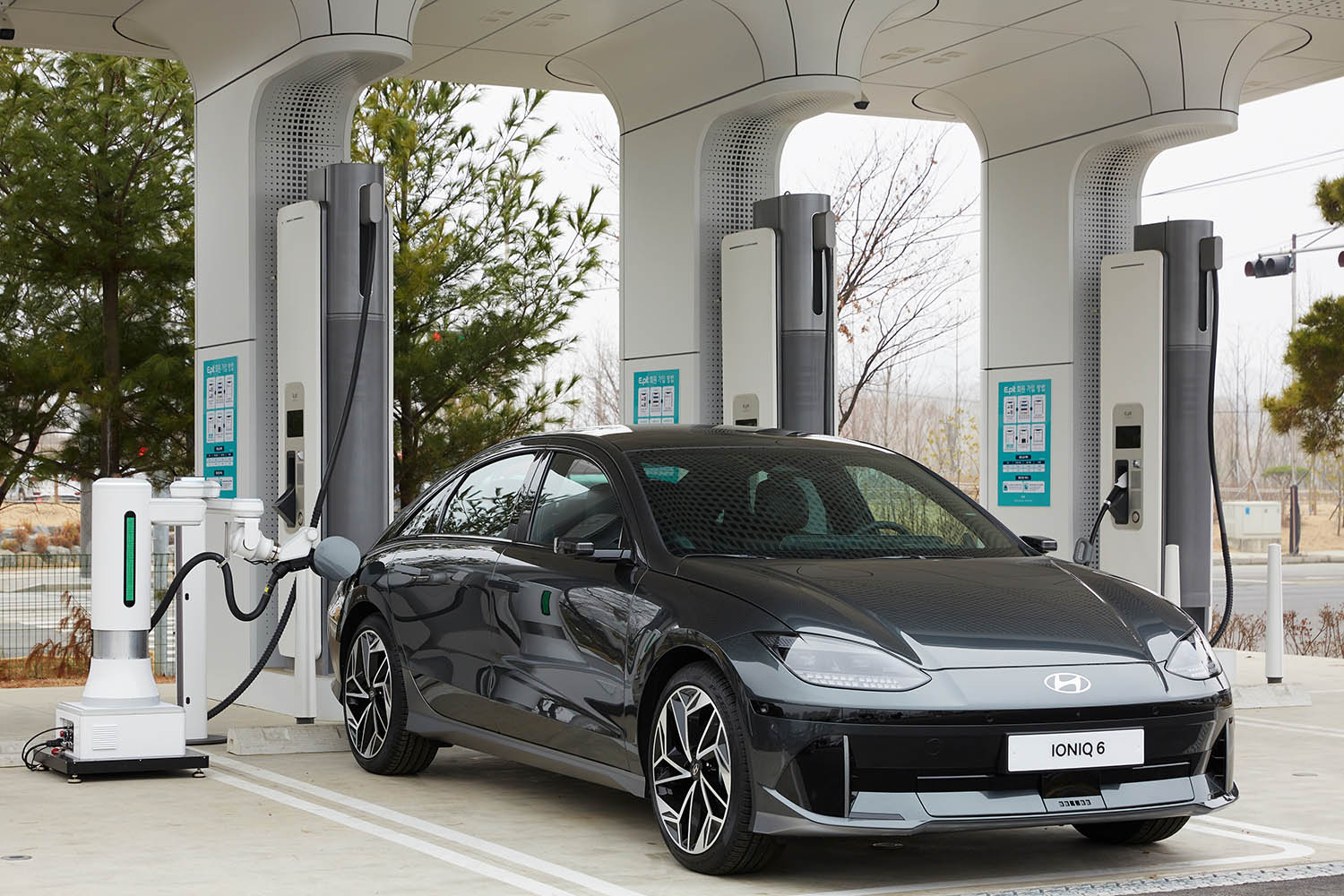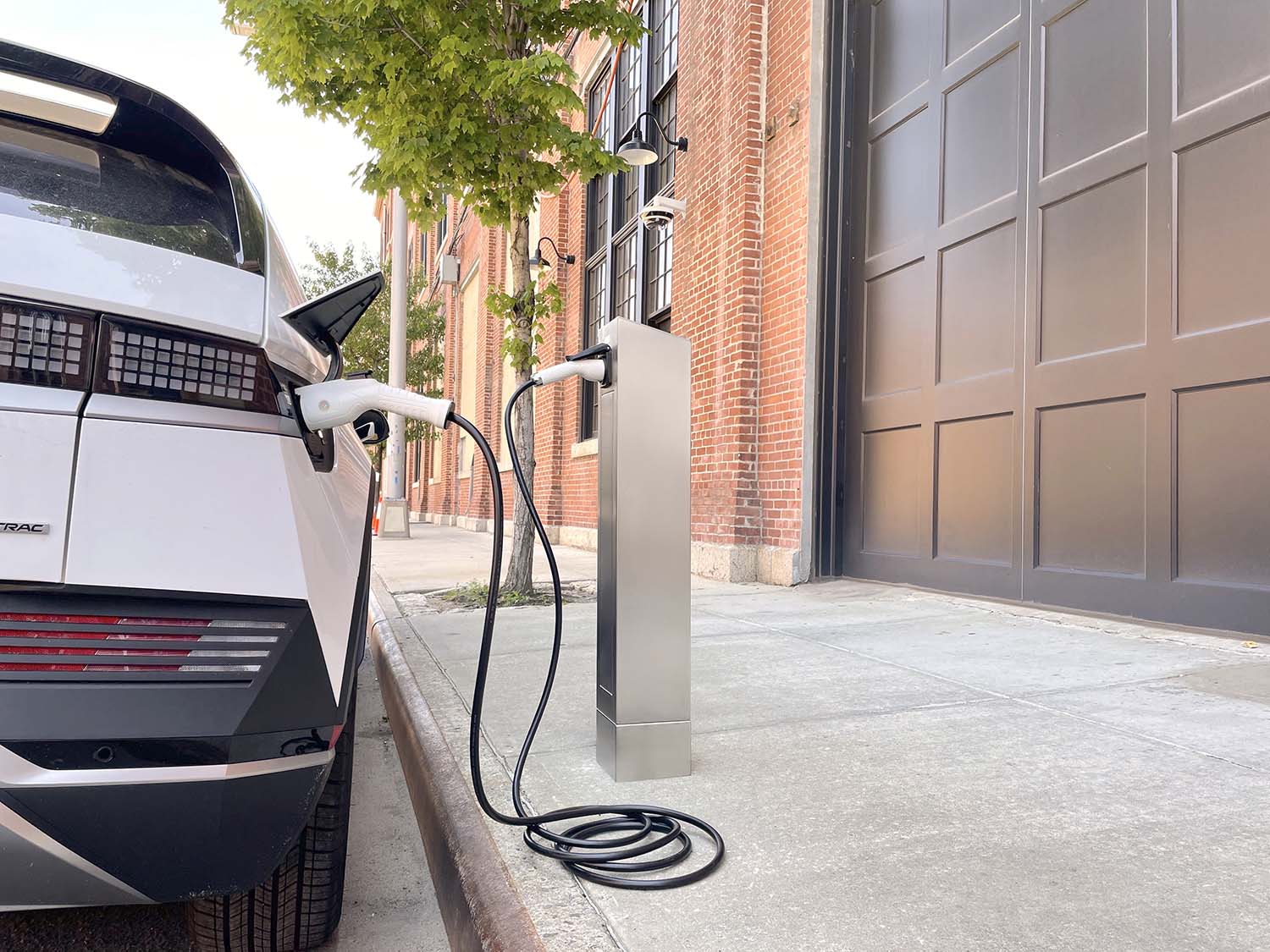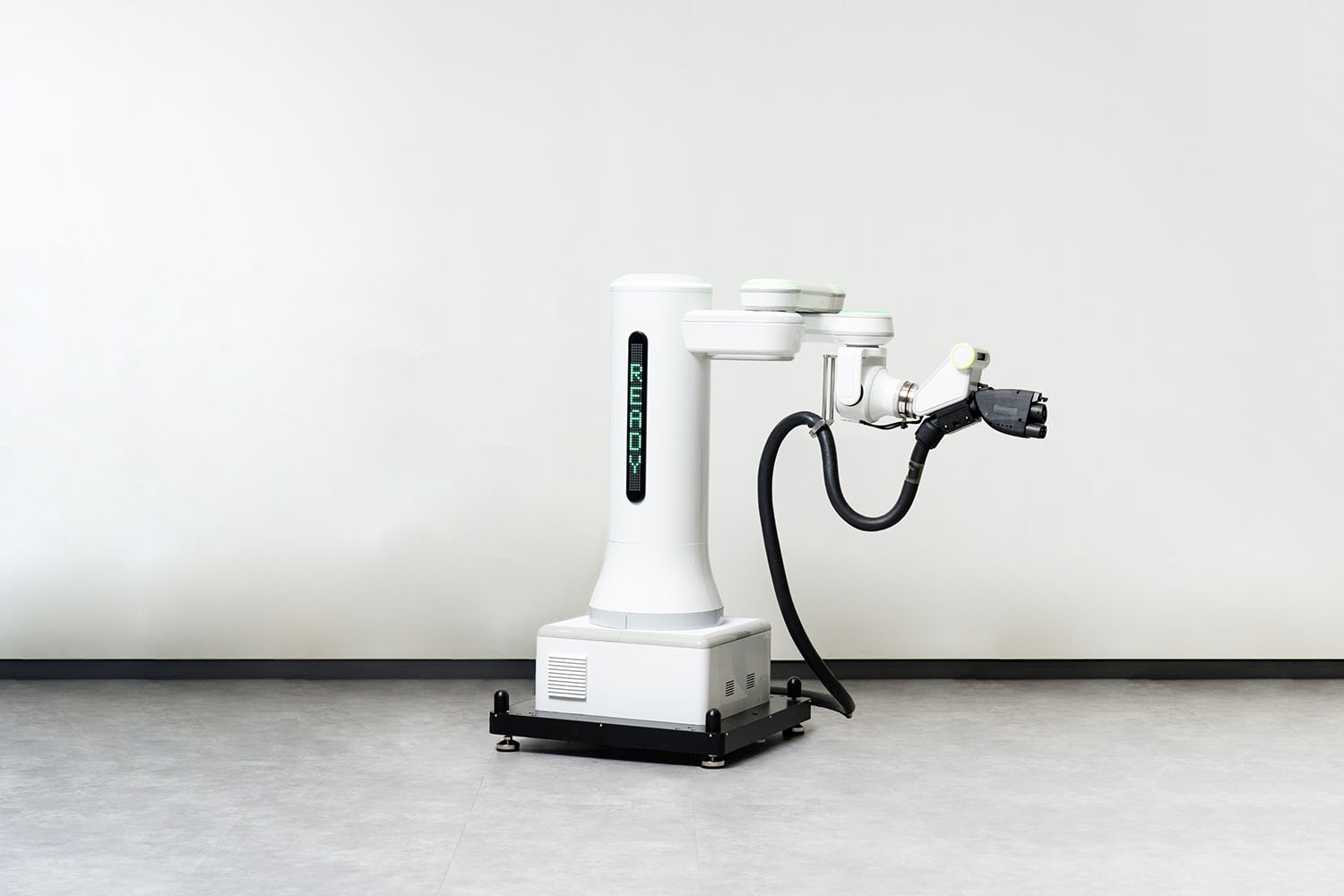How Accessibility Plays Into the Location of EV Chargers
As EV infrastructure evolves, both government and industry grapple with ensuring access to everyone.
 Hyundai
Hyundai
As electric vehicles become more prevalent on U.S. roadways, optimizing the design and construction of EV charging stations will likely grow in importance as well. Accessibility is a key part of that development task, for government entities and charge providers alike. The best path toward ensuring equitable access for drivers with disabilities, however, is not yet clear. Existing guidelines at the federal level are vague, though recommendations issued in July 2022 by the U.S. Access Board for accessible EV charging stations suggests growing interest in improving accessibility
The Americans with Disabilities Act (ADA), federal civil rights legislation that "prohibits discrimination against people with disabilities in all areas of public life," covers all manner of ingress, egress, and access to services. This includes the placement and integration of electric vehicle charging stations in publicly accessible locations such as retail establishments, offices, businesses, and parking lots/structures.
However, as noted by the Department of Energy (DOE), which has some oversight on EV charging, the ADA doesn't spell out exact design standards for charging stations. In the absence of explicit ADA guidance, the DOE currently provides some best practices for accessible EV charging, including formal studies, guidelines, and plans integrated into state and local legislation.
 Hyundai
Hyundai
Some considerations for ADA-compliant EV chargers
When independent companies, municipalities, or other entities plan to install EV charging stations, the DOE says they should "consider accessibility, ease of use, and safety for disabled drivers and vehicle occupants, including those using wheelchairs or other assistive equipment."
EV charging stations must be accessible under ADA guidelines if they're open to the public. The government casts a wide net when considering what's publicly accessible, which means just about any charging located in a parking lot, on a street, or in a rest stop must be ADA compliant.
This consideration includes a broad range of factors, according to the DOE, such as providing "adequate space for exiting and entering the vehicle, unobstructed access to the charger, free movement around the charger and connection point on the vehicle, and clear paths and proximity to building entrances." The Department of Energy also offers ADA-relevant parking guidance for employers installing EV charging equipment.
 Hyundai
Hyundai
EV charging providers playing catch-up on access
We contacted half a dozen major players in the EV charging space — including charging-station companies Electrify America, EVgo, and ChargePoint and automakers General Motors, Mercedes-Benz, and Hyundai — to find out how these companies are addressing accessibility concerns. Though all noted the importance of the question, none provided meaningful or specific guidance regarding their practices.
For example, Electrify America, which says it runs the largest U.S. network of EV charging stations, reported via email only that it takes into account local jurisdictional requirements.
Adding to the complexity of this topic is the ongoing confusion about combining EV charging spaces with parking spaces for those with disabilities. This practice has been noted in articles and online forums.
Substituting parking for people with disabilities with parking for EV charging is counterproductive to the need for accessibility in general and the separate need for EV parking.
Although there is likely not a perfect solution for this issue, the California Plug-In Electric Vehicle Collaborative says that standardizing and clarifying signage could help decrease confusion and ensure that space is reserved both for accessible parking in general and also specifically for EV drivers with disabilities.
That said, signage is dictated by zoning codes and not charging-station companies. Any changes to improve communication about who should park and charge where would need to come to local sign codes.
 Hyundai
Hyundai
Future advances in EV charger accessibility
Aside from the logistical considerations involved in creating parking spaces for people with disabilities who need to access EV chargers, there can be challenges concerning the act of exiting an electric vehicle and attaching a charging unit. Some companies have been exploring solutions, however.
The Hyundai Motor Group (HMG), which includes automakers Hyundai, Kia, and Genesis, recently unveiled a prototype hands-free EV charging robot. This waterproof and dustproof charger uses laser guidance and a 3D camera-based artificial intelligence algorithm to line itself up with an electric vehicle's charging port. It also communicates with the car's onboard system to open the charging-port door, select the proper plug, and insert itself for a charge. These actions make it unnecessary for the driver or any passengers to exit the vehicle or handle the charging equipment.
Robotic charging is not a novel idea. Tesla showed a metal snake-like robot charger in 2015, though it is not yet a reality. For more than a decade, WiTricity has been working on a wireless charging system that would not require the manual or automated plug connection. Stellantis recently revealed plans for a robotic inductive-charging system for its Ram 1500 Revolution BEV concept pickup, calling it the Ram Charger — a callback to brand sibling Dodge's muscle car and the Dodge Ramcharger SUV introduced in 1974.
These solutions could have wide-ranging applications for ADA compliance. The head of HMG's Robotics Lab, Dong Jin Hyun, said in a press release that the new robot charger could be of particular assistance to people with mobility barriers, especially "as charging cables become thicker and heavier to enable high-speed charging."
Written by humans.
Edited by humans.
 Brett Berk
Brett BerkBrett Berk is a New York City-based writer who covers the intersection of cars and culture: art, architecture, books, fashion, film, politics, television. His writing appears regularly in top-tier automotive and lifestyle publications.
Related articles
View more related articles